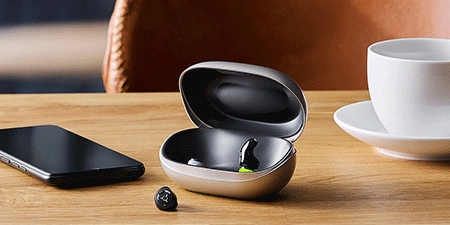Learn the Pros & Cons of Invisible Hearing Aids

Learn the Pros & Cons of Invisible Hearing Aids
10 min
Published January 16, 2025
The Pros & Cons of Invisible Hearing Aids
Modern hearing aids are available in a range of styles, suiting varying hearing loss needs and preferences. One key reason patients are reluctant to get hearing aids is that the devices are visible to others around them. With invisible hearing aids, feeling alienated from your peers or uncomfortable with chunky devices attached to your ears is a thing of the past.
The hearing aid specialists at AudioNova understand the worry of getting new hearing aids. Still, we want to alleviate your concerns by providing all the resources you need on your journey toward better hearing health. Invisible hearing aids are as close to invisible to the naked eye as possible, resting deep in the ear canal. While there are several noteworthy advantages when compared to traditional hearing aids, there are also drawbacks patients should consider when selecting their devices. Below, we discuss the pros and cons of invisible hearing aids. Schedule an appointment with a provider today to learn more about your options for hearing aids.
Advantages of Invisible Hearing Aids
Some of the top benefits of invisible hearing aids include:
Enhanced Aesthetics – For most patients, invisible hearing aids are attractive because they feature no wires, tubes, or bulky parts. They fit entirely within the ear canal, making them discreet and comfortable.
Natural Sound – Invisible hearing aids are close to the tympanic membrane and have been reported to sound more natural than other devices. Rather than receiving sound via an external device and transmitting it through a tube, sound waves travel through the ear canal before reaching the device.
Comfort – One of the top complaints regarding traditional hearing aids is how difficult they can make some daily tasks. When you have a bulky hearing aid attached to your ear, holding up the phone receiver or wearing accessories on your head can be challenging.
Drawbacks of Invisible Devices
Invisible hearing aids are attractive to patients in several ways, but there are also several cons patients need to consider and discuss with their hearing care professional, including the following:
Size Issues – Because invisible hearing aids are so small and discreet, they can be difficult to handle for those who struggle with manual dexterity. They’re much smaller than other devices, so they typically lack on-device controls and other features that can appeal to many patients. Some models of invisible hearing aids are even too small to fit in some people's ears. They also typically have a shorter battery life than larger hearing aid models.
Cost – The price point of high-quality invisible hearing aids with the same basic functionality as traditional devices is generally hefty. Invisible hearing aids are designed with highly complex, sensitive, and fine-tuned electronics, so it's no surprise they're more expensive than other models.
Not Suitable for All Types of Hearing Loss – Hearing aid technology has significantly advanced over the past several decades. However, we have yet to invent a hearing aid that is as effective and functional as a high-end, full-sized device. Invisible hearing aids are insufficient for most patients who have profound hearing loss. These devices are best suited for mild to moderate hearing impairment.
Explore Hearing Aid Options With AudioNova
If you have mild to moderate hearing loss and want to opt for a hearing aid style unseen to those around you, AudioNova can help match you with something that suits your needs and preferences. Our hearing experts are highly knowledgeable about all the types and models of hearing aids available, so you can rest assured you'll get the individualized treatment you deserve. The best way to start your journey towards better hearing is by scheduling a consultation with our team. Contact us today to learn more.




